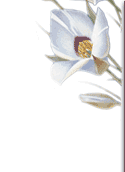Love! Love! Love! ~ Valentines have a Colorful and Fascinating History

Daughters of the Utah Pioners
Items of Interest


Love! Love! Love!
Valentines have a Colorful and Fascinating History
(Valentine's from the Pioneer Memorial (DUP) Museum
Collection)
There are many historical factors that explain how Valentine's Day began. As far back as the ancient times, the middle of February was a time of the year devoted to love and fertility for the Greeks and Romans. One version dates back to 273 A.D. A Roman Bishop Valentine (Valentinus) was beheaded on February 14 after being accused of hiding Christians from Roman persecutions. Legend tells us that while Valentine was in jail, the Emperor sent his servant to jail to convert Valentine to idolatry. The servant was converted to Christianity instead, when Valentine healed the servant's blind daughter. Another version states that while Valentine was being kept in jail, he fell in love with the jail keeper's daughter. He wrote love letters to her decorated with beautiful calligraphy, flowers, vines, birds, cupids, and hearts. When it was discovered, he was executed on February 14. His last letter was signed 'your Valentine.'

Much of the Christian world observes St. Valentine's day. The first published mention of the day being associated with romantic love is credited to Geoffrey Chaucer in 1382. The oldest written Valentine in existence is from 1415 -- a poem written by the Duke of Orleans to his wife while he was being held in the Tower of London. In 1537, King Henry VIII published a royal charter making February 14 a day for all lovers.
In North
America, British settlers continued the tradition of associating the day with
sweethearts. George Washington, however, would not have given Martha a card on
the day. Other customs were practiced in colonial times, such as pinning bay
leaves on one's pillow to dream of their true love. Another activity for hopeful
youngsters was to write down the name  of possible suitors on pieces of paper, put them in
clay, and drop them into a container of water. The name that floated to the top
first was one's 'true sweetheart.'
of possible suitors on pieces of paper, put them in
clay, and drop them into a container of water. The name that floated to the top
first was one's 'true sweetheart.'
Replacing the tradition of giving gifts, the practice of exchanging paper Valentines really blossomed in the nineteenth century. Originally handmade, Valentines were collages of lace paper, colorful cut outs, hearts, flowers, locks of hair, dried flowers, feathers, shells, and other romantic images (Cupid was always a favorite). Many of the handmade Valentines were folded and contained clever verses to profess one's love: 'If the painting of my life were the Mona Lisa, you'd be the smile.' For the less creative, verse books were sold for one penny, so that the right phrase for each Valentine could be used. Many of the symbols had special meanings: a birdcage meant domestic love; a peacock was vanity; a yellow rose was jealousy; a red rose meant purity, etc.

The tradition of mass-produced Valentines is credited to have been started by Esther Howland, of Worcester, Massachusetts. In 1847, it is said she received an exquisite English homemade card that inspired her to create Valentines that could be sold in her father's stationery store the following year. Her cards were enormously popular, and shortly her enterprise was making $100,000 per year. She became known as the 'Valentine Queen of America.' Paper lace, silk, and fabric fringe were popular components in the early Valentines, later printed examples were cleverly folded or composed of moving parts. To create the paper lace, an intricate process of hand sculpting dies and precision machinery was used. Printed Valentines, of course, expressed romantic and humorous sentiments (or both). Verses could be sweetly romantic ('You make flowers of my hours, today was a perfect bouquet') or cleverly comical ('Every girl cupid hits, he Mrs').
The Pioneer Memorial Museum has an exceptional collection of beautiful Valentines, both homemade and mass-produced. As was the national custom, pioneers exchanged Valentines on February 14, and many of their paper love notes survive.

